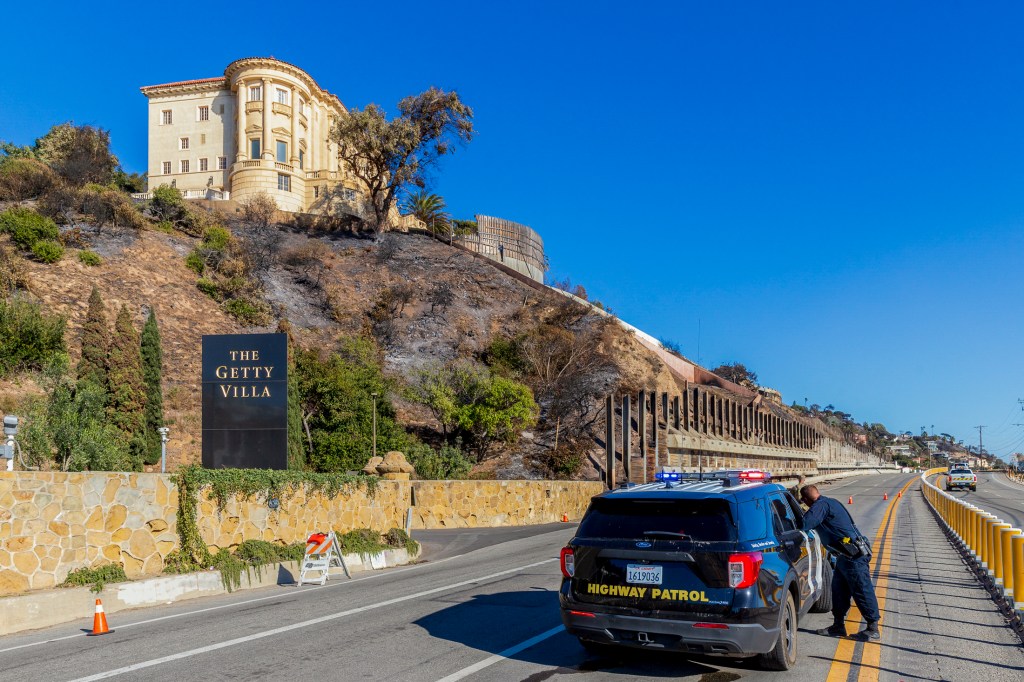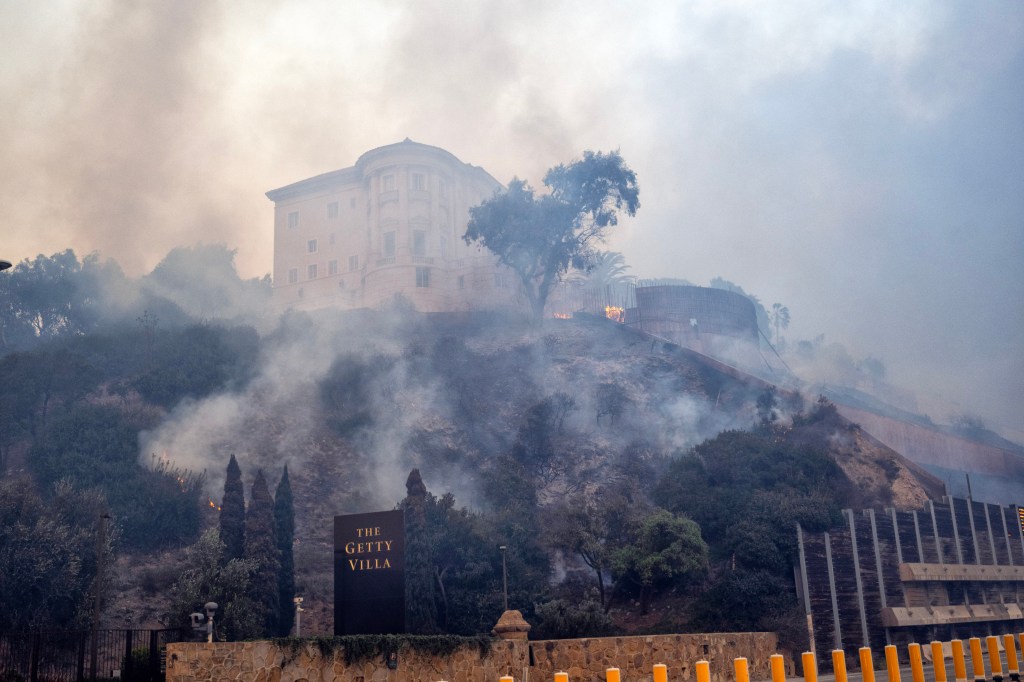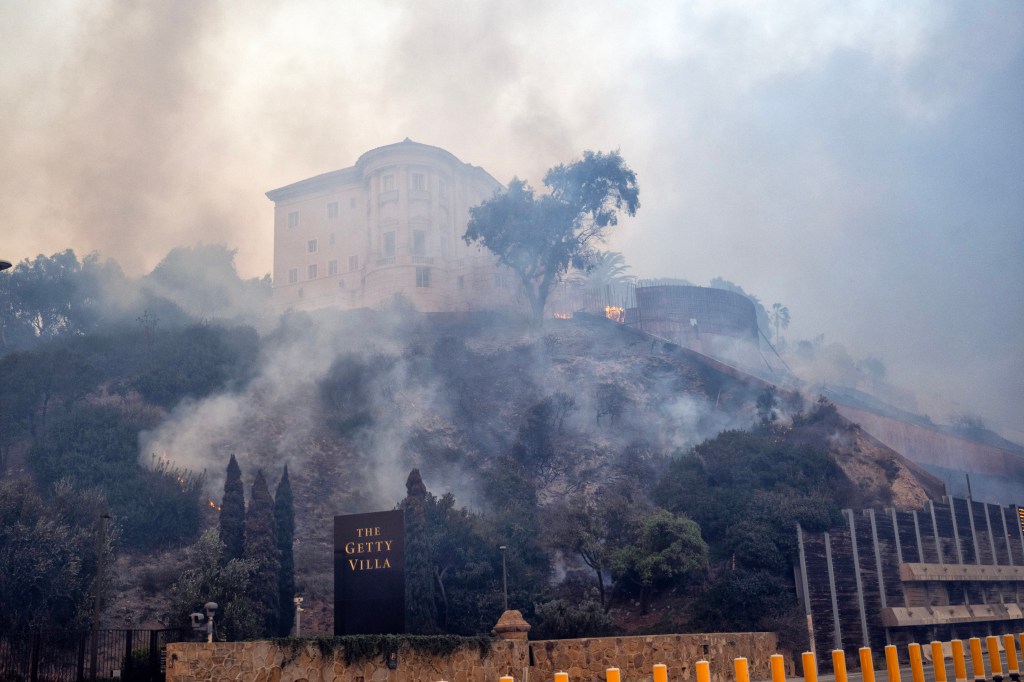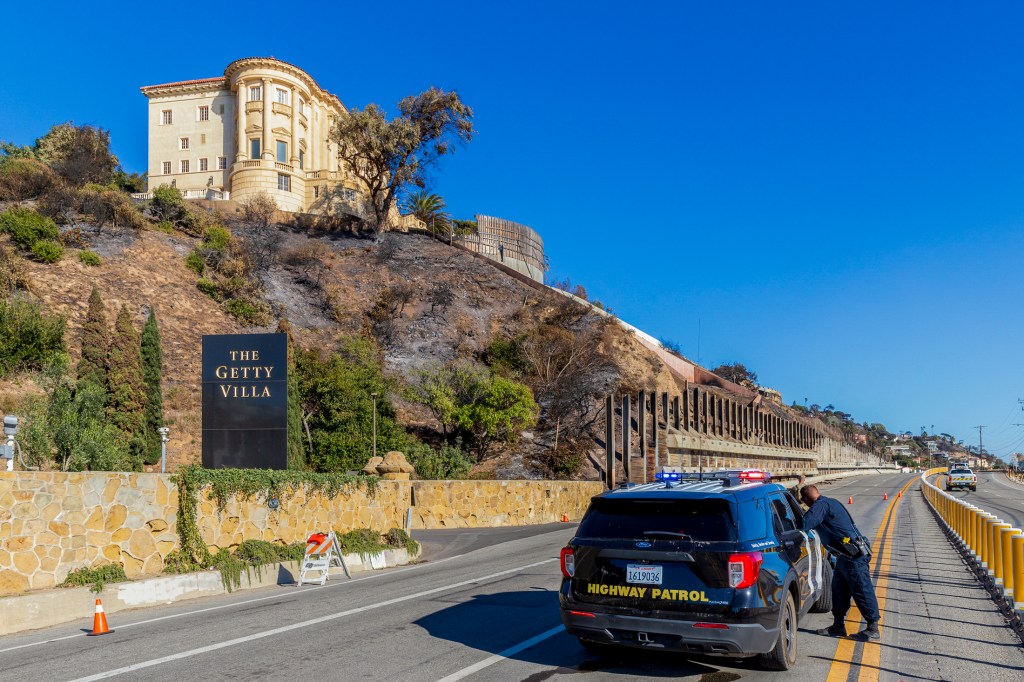## The Getty’s Gods Are Frowning: Palisades Fire Shuts Down Museum Indefinitely
Imagine stepping back in time, surrounded by ancient Roman grandeur, the scent of citrus from the gardens mingling with the whispers of history. Now picture that idyllic escape shrouded in smoke, the air thick with the urgency of a raging wildfire. Sadly, that’s the reality for the Getty Villa right now. The iconic museum, home to a breathtaking collection of Greco-Roman antiquities, has been forced to close its doors indefinitely due to the relentless Palisades Fire.

A Cultural Treasure Under Threat

The Getty Villa, a renowned museum dedicated to the art and culture of ancient Greece, Rome, and Etruria, has been forced to close indefinitely due to the raging Palisades Fire. This devastating blaze has not only threatened the museum’s physical structure but also the future of its newest exhibit, a captivating glimpse into the ancient land of Thrace.

The Getty Villa’s Newest Exhibit: A Glimpse Into Thracian Heritage
The exhibition, titled “Thrace: Treasures from Antiquity,” opened its doors on November 4, 2024, and was set to run until March 3, 2025. It showcased a remarkable collection of gold, silver, and bronze artifacts unearthed from Thracian tombs and settlements. These exquisite pieces provided a window into the lives of the Thracians, an ancient civilization that thrived in what is now Bulgaria, Romania, Greece, and Turkey.
The Getty Villa’s curators meticulously selected each artifact to tell a story of Thracian culture, showcasing their aristocratic pursuits, including warfare, horsemanship, and lavish banquets. Visitors were treated to a visual journey through time, immersing themselves in the world of this fascinating civilization.
The Impact of the Fire on Exhibition Plans and Visitors
The unexpected closure of the Getty Villa due to the Palisades Fire has dealt a heavy blow to the exhibition’s success. Not only have thousands of visitors been denied the opportunity to experience this unique collection, but the museum has also incurred significant financial losses. The exhibit was expected to draw large crowds and generate substantial revenue for the institution.
Furthermore, the closure poses a challenge to the museum’s conservation efforts. The artifacts, which are incredibly fragile and sensitive to environmental changes, require meticulous care and monitoring. The extended closure could potentially jeopardize their long-term preservation.
A Battle Against the Blaze: Getty’s Resilience Amidst The Crisis
Amidst the chaos and devastation caused by the Palisades Fire, the Getty Trust has demonstrated unwavering resilience and commitment to safeguarding its valuable collections and protecting its staff. While the Getty Villa has been forced to close indefinitely, the Getty Center in Brentwood remains open, albeit with precautionary measures in place.
The Getty Center and Villa: Safe, for Now, But Still at Risk
As of Monday, January 20, the Getty Center stands relatively safe from the immediate threat of the fire. While the Villa, perched on a hilltop overlooking Pacific Coast Highway in Pacific Palisades, was directly threatened in the initial stages of the blaze, it has weathered the storm, albeit with some damage.
Katherine E. Fleming, president and chief executive officer of the J. Paul Getty Trust, assured the public that both institutions remain intact. “The Getty Center and Getty Villa remain safe and stable,” Fleming stated. “We continue to monitor the situation closely and are prepared to take any necessary steps to protect our collections and staff.”
Evacuation Orders and Safety Measures: A Delicate Balancing Act
The Getty Trust has implemented strict safety protocols to ensure the well-being of its staff and visitors. Evacuation orders have been downgraded to warnings for the areas surrounding both the Getty Center and Villa.
“The evacuation level at the center has been reduced to Level 2, ‘get ready’ as opposed to ‘go,’ and we have been told the winds have shifted away from the site,” Fleming said. “However, the situation remains highly fluid, and we urge everyone to stay informed and follow the guidance of local authorities.”
Beyond the Flames: The Broader Impact on Los Angeles
The Palisades Fire, which has scorched over 23,000 acres and tragically claimed 24 lives, has had a devastating impact on Los Angeles and its surrounding communities. The blaze has not only ravaged natural landscapes but also caused significant economic and cultural losses.
The Palisades Fire’s Devastating Toll: Acres Scorched and Lives Lost
As of Monday, January 20, the Palisades Fire remains uncontained at 13%. It stands as a stark reminder of the destructive power of wildfires, leaving a trail of destruction in its wake. The fire has forced thousands of residents to evacuate their homes, leaving them displaced and uncertain about their future.
The Ripple Effect: Economic and Cultural Consequences for the Region
The economic impact of the Palisades Fire is already being felt across Los Angeles County. Businesses in affected areas have been forced to shut down, leading to job losses and revenue decline. The tourism industry, a major driver of the local economy, has also been significantly impacted, with hotels and attractions reporting cancellations and reduced visitor numbers.
Moreover, the fire has caused irreparable damage to cultural and historical landmarks. The Getty Villa, a renowned museum housing priceless artifacts, was directly threatened by the blaze, showcasing the vulnerability of cultural treasures in the face of natural disasters. The loss of irreplaceable artifacts and historical sites represents an immeasurable cultural blow to the region.
Conclusion
The Getty Villa’s indefinite closure due to the Palisades Fire serves as a stark reminder of the vulnerability of cultural treasures in the face of climate change. While the fire itself was a tragedy, the subsequent closure highlights the delicate balance between preserving heritage and ensuring public safety. The article explored the fire’s devastating impact on the surrounding landscape, the Getty Villa’s immediate response, and the uncertainty surrounding its reopening. This event underscores the need for proactive measures to protect cultural institutions from increasingly frequent natural disasters. As the smoke clears and the charred landscape begins to heal, the Getty Villa’s future remains uncertain. The closure not only impacts the millions who annually visit this architectural marvel to experience art and history, but also disrupts the research and educational programs it offers. The question remains: how will this closure, and others like it, shape the future of cultural preservation? Will it spur a global conversation about safeguarding our heritage in an era of climate uncertainty? Or will the flames of these disasters continue to consume our shared history, leaving behind only ashes and unanswered questions?







Add Comment